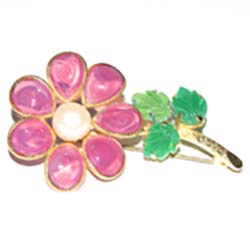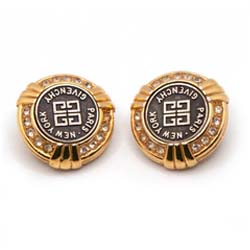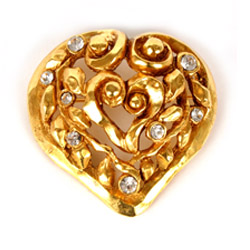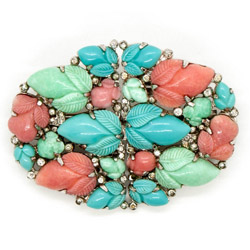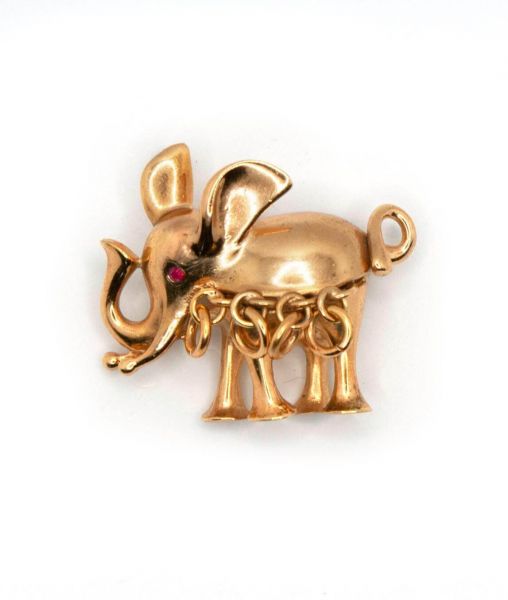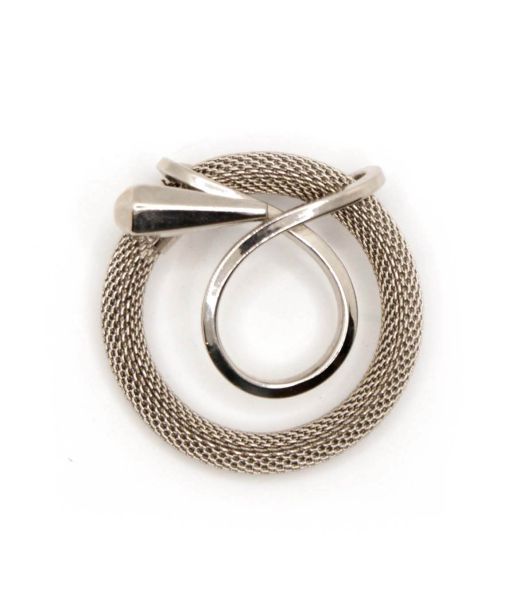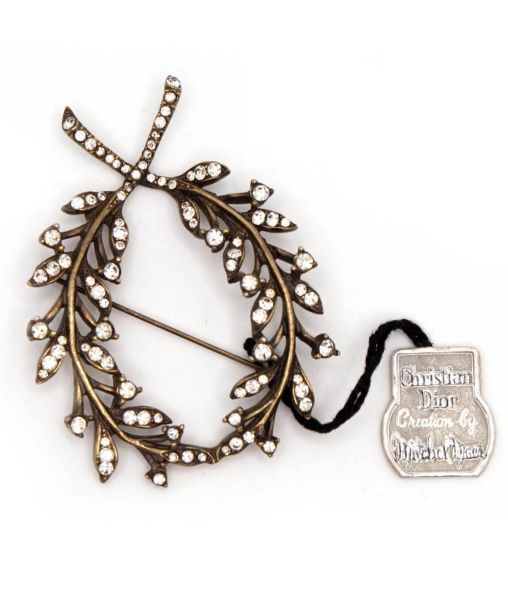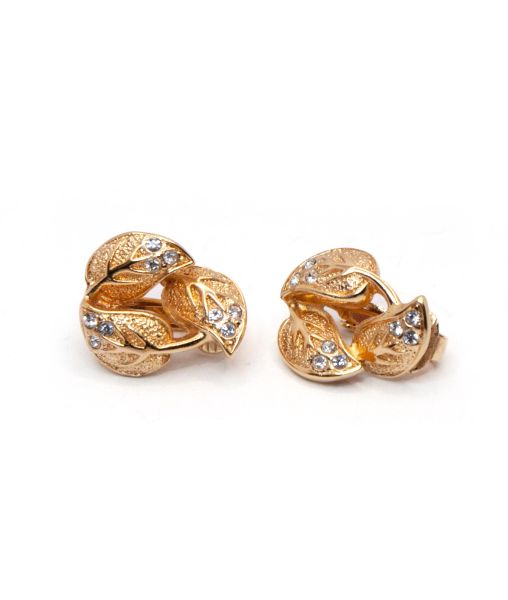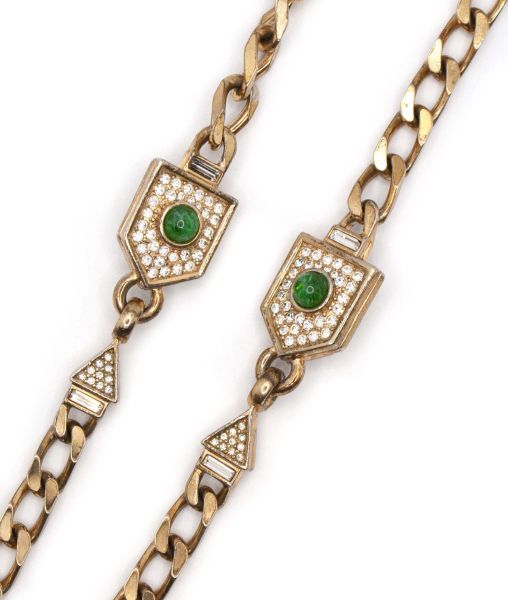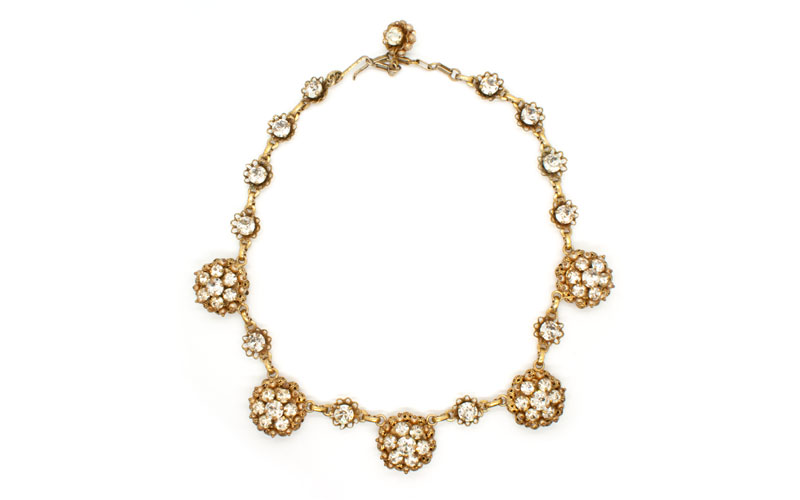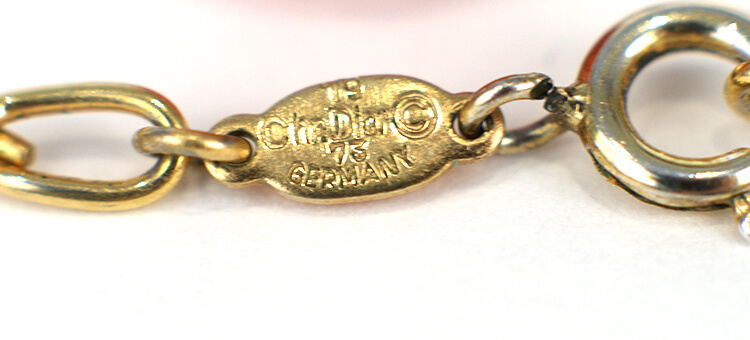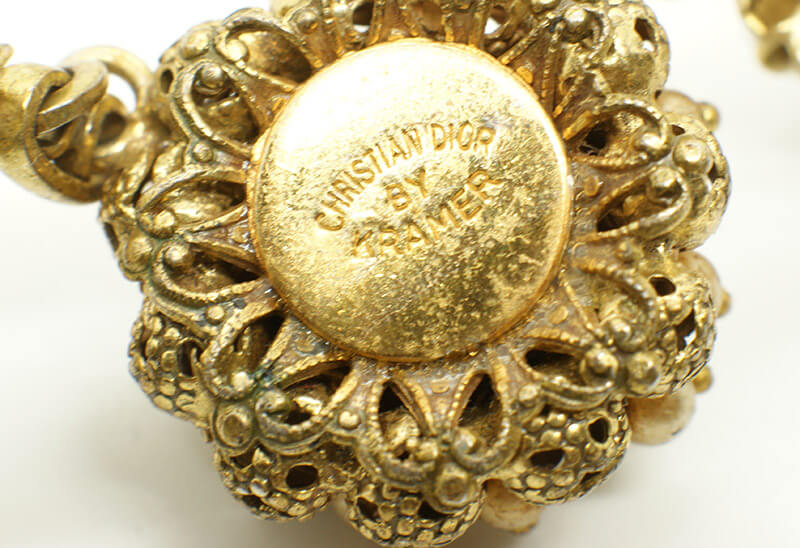Collecting Christian Dior Vintage Jewellery: The makers and paruriers
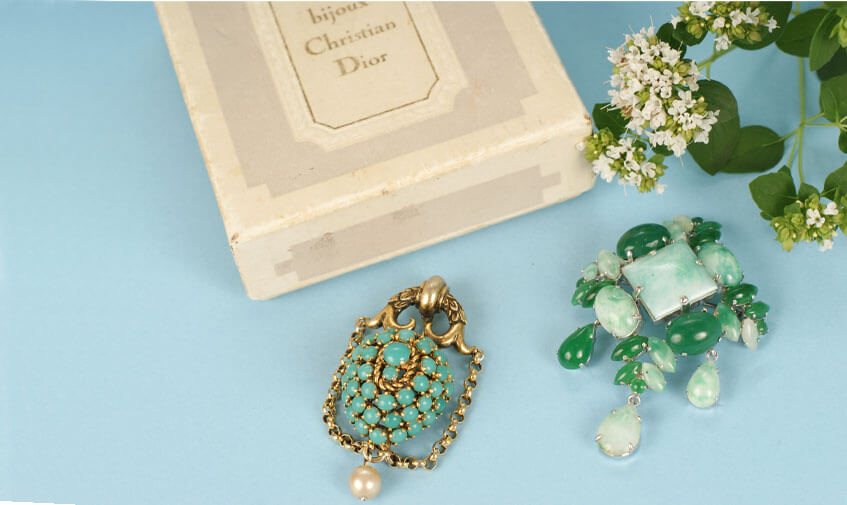
A short history of Dior Fashion and Jewellery
In 1947 a Frenchman from Normandy named Christian Dior launched his ‘New Look’ designs and the fashion House of Dior was born. His designs were characterized by a very feminine silhouette, featuring narrow waisted dresses with full skirts. They were seen as an antidote to the looser silhouette of the Deco period and the functional fashions of the war years.
Dior was among the first fashion designers to create jewellery as an integral part of his fashion collections. His jewellery was designed with each look in mind and complimented the clothes. The first Dior jewellery collection was created by famed French parurier, Maison Gripoix and in 1948 the collections were created by other companies under licence.
Dior was fond of flowers and especially fond of lily of the valley; floral themes often found their way into his jewellery designs. Flowers were formed from plated metal, poured glass and frequently sprayed with Austrian crystals.
Notably, in the 1950s, Dior worked with the Swarovski Crystal company to develop a new coating which when applied to their crystals would give an iridescent effect. They named it Aurora Borealis after the colour changing Northen Lights.
Sadly, Christian Dior died in early middle-age in 1957 and a young Yves St. Laurent was promoted to head of the house. He departed after two years and Marc Bohan began his long tenure in 1960.
Dior Jewellery Designers: The Paruriers
Christian Dior insisted that the jewellery created in the Dior name matched the quality of the clothing that the house produced, and he therefore set out to find the paruriers and jewellery makers at the top of their industry. View our selection of vintage Christian Dior jewellery.
Henkel & Grosse
The German company won a contract to supply Christian Dior jewellery in 1955 and have maintained that contract ever since. Henkel & Grosse still create jewellery for the house of Dior today as well as their own lines. Dior’s affiliation with a German company so soon after the war raised eyebrows across France, but the quality of the product eventually silenced the detractors.
Henkel & Grosse have an exclusive licence to produce jewellery under the ‘Bijoux Christian Dior’ name and in more recent times they were responsible for the ‘Boutique Dior’ line.
Their forte is gold-plated jewellery and they made a lot of this for Dior however they also mastered crystal set jewellery and their pieces from the 1950s and 1960s are crystal rich.
The other paruriers would sometimes design and build a prototype piece which was then passed to Henkel & Grosse for manufacture.
Kramer
Kramer was an American company, based in New York, which produced costume jewellery from the late 1940s to 1970. They were known for the high quality jewellery which often heavily featured crystals and golden filigree. They were licenced to produce Dior costume jewellery for the American market beginning in 1948.
Mitchel Maer
An American based in England, Mitchel Maer made costume jewellery for Dior from 1952 – 1956. His pieces were informed by a Victorian aesthetic, often featuring a floral motif, although perhaps his most sought-after piece is a unicorn brooch which is as rare as its namesake. His output was cut short in 1956 when his company went bankrupt. He held a fire sale to recoup some money, but Christian Dior insisted that the Dior name should be removed from the pieces before the sale. Therefore, for the savvy collector it is possible to find ‘unsigned’ Mitchel Maer for Dior pieces at bargain prices.
Francis Winter
Francis Winter was very well known in the French fashion industry throughout the 1950s. His atelier produced intricate costume jewellery for Dior as well as other couturiers such as Balenciaga, Lanvin and Chanel. As well as designing and producing fabulous jewels, Francis Winter was also the President of the Chambre Syndicale de la Bijouteri. He chose the term ‘paruriers’ to represent the tradespeople of costume jewellers to the couturiers. Francis Winter produced upwards of 2500 pieces per year, most heavily influenced by Austrian crystals. In fact, Francis Winter had the exclusive use of Swarovski’s Heliotrope and Bermuda Blue stones.
Roger Jean-Pierre
Roger Jean-Pierre worked in the French fashion industry for many years and was in fact a director at Francis Winter until 1958 when he founded his own company. His pieces again favoured crystal gems in their designs and he had exclusive use of Swarovski’s ‘brillon’ stones. Roger Jean-Pierre produced a lot of pieces that sold very well in the American market.
Schreiner
Many resources across the internet name Schreiner as one of Dior’s paruriers however new research has revealed that the Schreiner company was commissioned to produce only one set for Dior in 1949. The rhinestone earrings and matching brooch were shown on the cover of Harper’s Bazaar that year.
Roger Scemama
Scemama began his company in the 1930s and designed and produced costume jewellery for Christian Dior in the 1940s. Scemama pieces favoured silver metal and pink, violet or green Austrian crystals. The crystals were often set with highly visible prongs, a trait later seen in Schreiner jewellery.
Other design houses such as Maison Gripoix, Robert Goossens, Maryse Blanchard and Louis Rousselet also created pieces for Dior shows at various points.
How to date Christian Dior Jewellery – Jewellery Marks
Fortunately, most pieces of Dior costume jewellery are signed and many of them are dated. Most pieces created by the German makers, Henkel & Grosse, for Dior have a signature plaque attached which features the year of manufacture.
The French Paruriers
It can be difficult to identify pieces by the French paruriers like Roger Jean-Pierre and Francis Winter as they weren’t signed. It is sometimes stamped ‘Made in France, but collectors must rely on their familiarity with a designer’s work to attribute a piece. Particular findings were often used, such as the 'S' clasp used to fasten necklaces in the 1950s and 1960s.
Henkel & Grosse Marks
All jewellery produced for Dior by Henkel & Grosse was signed but the stamps have varied through the years. Most of the oval plaques affixed to pieces of the 1950s and 1960s say ‘Christian Dior’ with the year and the copyright symbol.
In the late sixties and early seventies they began to use ‘Chr. Dior’ with the year. The plaques usually also say ‘Made in Germany’ or ‘Germany’
For a short time in the 1970s they used a rectangular plaque with hatched borders.
In the late 1970s and eighties they began to sign the hanging metal tag on necklaces with ‘Chr. Dior © Germany’
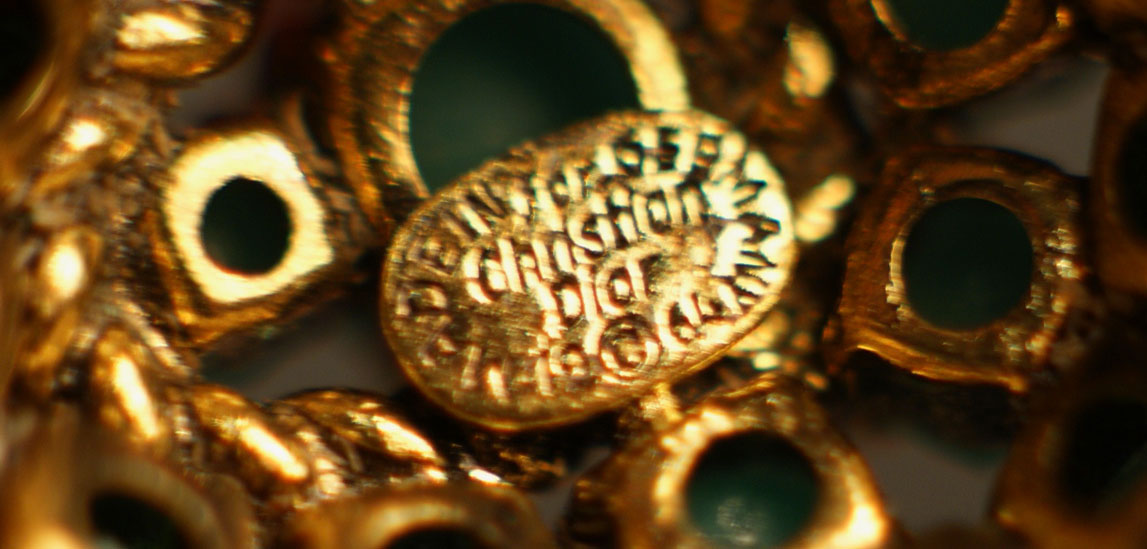
Kramer
Pieces are stamped directly into the metal or onto a plaque affixed to the piece. Markings include: "Christian Dior by Kramer," “Dior by Kramer,”, “Kramer for Dior”.
Mitchel Maer
Signatures are usually stamped into a plaque which is affixed to the piece. Some pieces, sold after Mitchel Maer went bankrupt, have had the plaque filed off.
.jpg)

